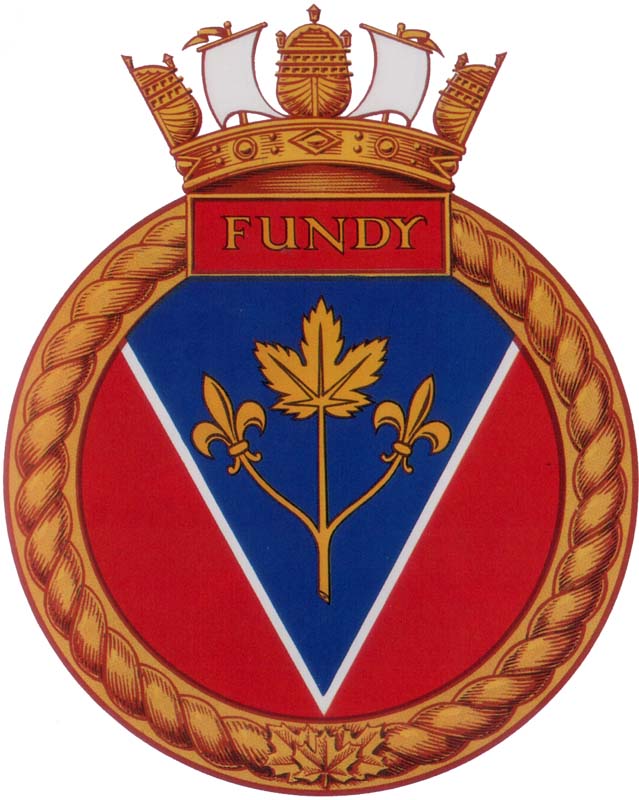HMCS FUNDY Badge

Blazon
Gules, a pile azure, fimbriated argent charged with a maple leaf between two fleurs-de-lis, all conjoined on the one stem, or.
(Glossary of Heraldic Terms)
Significance
The blue pile refers to the Bay of Fundy. The red background is primarily for contrast and brightness, but it could also refer to the reddish earth of the land that borders this bay. The white "fimbriation" is an heraldic requirement to mark a division between the two colours. The cross of St. George (England) in the union flag has a similar fimbriation. The golden floral device pays tribute to the original white settlers around Fundy who came from France, and from this root or stock present-day Acadians, in spite of many vicissitudes, have become loyal Canadians. This was given evidence in 1956, when Acadians from all over met at Moncton, NB, and sent an eloquent declaration of allegiance and loyalty to Her Majesty the Queen. The gold of the floral device is one of the Royal colours.
Remarks
Fundy (I) was the lead ship of the Fundy class of minesweepers. She was commissioned in September 1938, and wore pennant 188 until she was paid off in July 1945. Fundy (II) was a member of the Bay class of minesweepers and was commissioned on March 19th, 1954. She wore pennant 145 until she was paid off on March 31st, 1954 and transferred to the French Navy. Fundy (III) was also a member of the Bay class of minesweepers. She was commissioned in November 1956, and wore pennant 159 until being paid off in 1996.
Motto
Verimus altum ("We sweep the deep")
Colours
Red and gold
Battle Honours
Atlantic 1939-45.
References
Badges Of The Canadian Navy by Arbuckle, J. Graeme. Halifax: Nimbus Publishing, 1987.
CFP 267 - Badges of the Canadian Forces, Minister of Supply and Services Canada, 1977.
